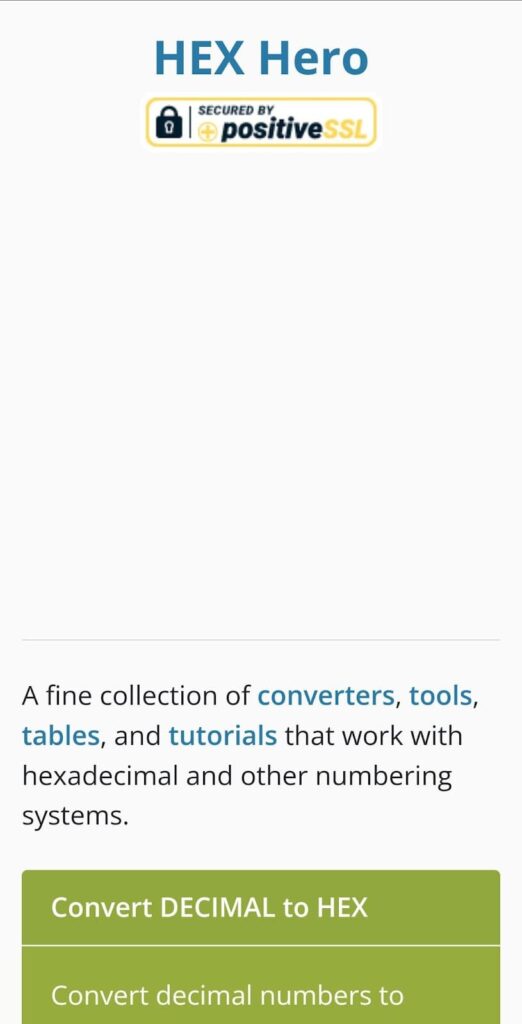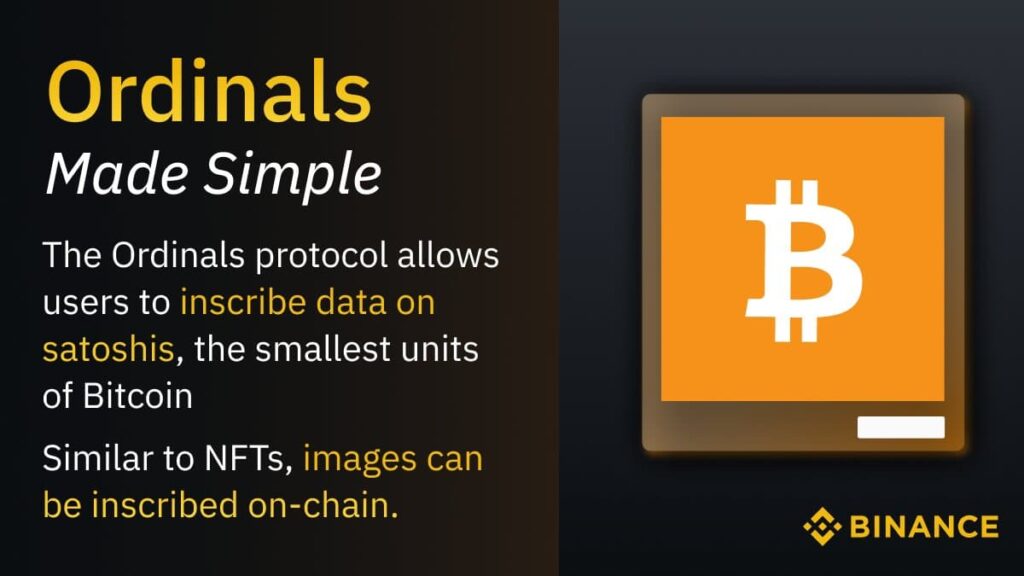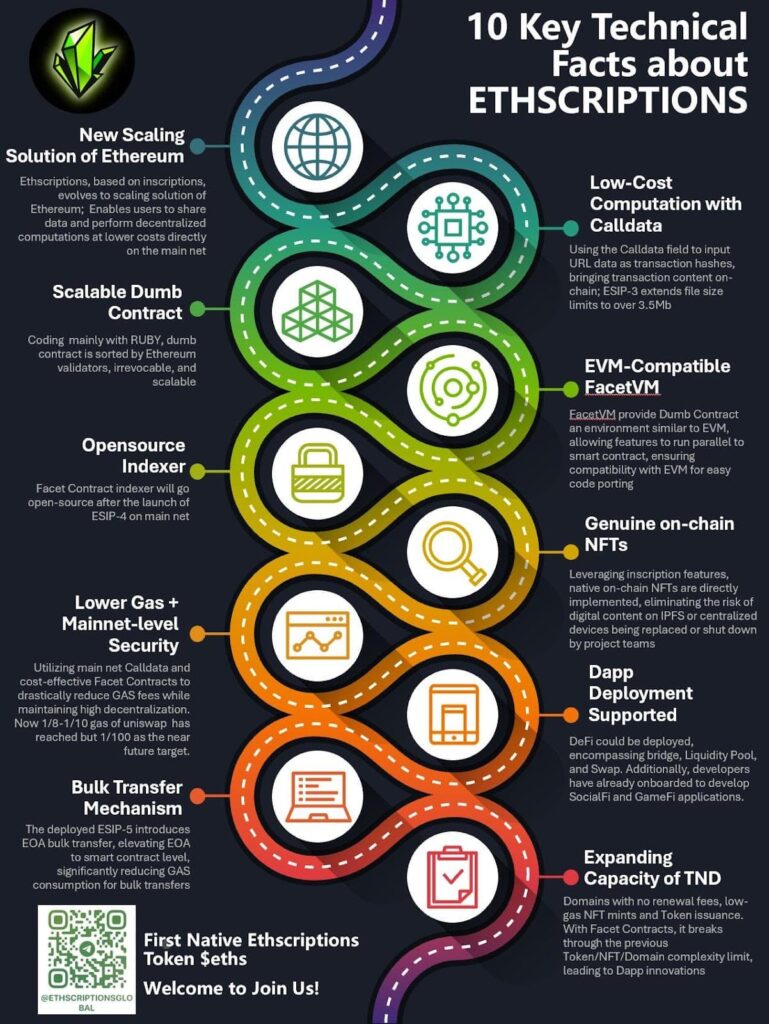Ethereum is a constantly evolving platform that supports various innovations and experiments. One of the latest developments is Ethscriptions, a new protocol that allows users to share data, especially images, on the blockchain without creating NFTs. This guide will provide you with all the necessary information about Ethscriptions in a concise format, in less than five minutes. We will walk you through the basics.
What Are Ethscriptions (ETHS)?
Ethscriptions represent a new concept within the Ethereum ecosystem as it enables the creation of on-chain digital artifacts. They employ a unique reference identifier encoded within an Ethereum transaction, which is different from the usual NFT approach.
What this entails is that by operating at the transaction level, Ethscriptions may offer a more cost-effective method for creating and storing digital items. But how do Ethscriptions do this?
How Ethscriptions (ETHS) Work
Creating an Ethscription is a user-friendly process—it doesn’t require coding knowledge or corporate key to deploy. Individuals can visit the Ethscription website, connect their Ethereum wallet, and upload an image. This image, which can be up to 96 kilobytes, is embedded into the blockchain through an ETH transaction.
Transferring an Ethscription, on the other hand, involves sending a zero ether transaction to the recipient’s wallet with the Ethscription ID included in the transaction’s data field. This ID is linked to the original transaction hash that created the Ethscription.
What Are the Potential Applications of Ethscriptions – ETHS?
Ethscriptions have broad implications for artists, creators, and developers looking to innovate within the Ethereum ecosystem. From allowing digital art, messages, or even complex ideas to be permanently etched onto the blockchain, to ensuring their immutability for as long as the network exists, amongst other use cases.
This new form of digital ownership provides a lasting legacy and a secure digital footprint on the blockchain.
Whatever you may use ETHS for, they work in a very similar way to Bitcoin Ordinals. They use the same kind of method.
How Do Ethscriptions (ETHS) Compare Bitcoin Ordinals?
As already mentioned, Ethscriptions offers a new way of creating and transferring digital artifacts on Ethereum. The fact is, they are inspired by Bitcoin ordinals—which are transactions that contain data encoded in hexadecimal format. Ethscriptions utilizes a similar technique, but instead of hex data, they use base64-encoded data URIs, which can represent images.
In contrast, ETHS do not require ERC-721 tokens, which are the standard for NFTs. This, thus, makes Ethscriptions cheaper and more decentralized than NFTs, according to their creator.
A Brief Origin of Ethscriptions (ETHS)
Who Created Ethscriptions (ETHS) And Why?
Ethscriptions are the brainchild of Tom Lehman, the co-founder of the music website Genius.com and the Capsule 21 podcast. Lehman, who goes by the alias Middlemarch on X (formerly Twitter), launched the Ethscriptions Protocol on June 17th, 2023.
You may ask, why? Why was ETHS created in the first place? Tom was motivated by the idea of Bitcoin ordinals, which he wanted to replicate on Ethereum. He also wanted to offer a cheaper and more decentralized alternative to NFTs, which he believes are too expensive and centralized.
Ethscriptions (ETHS) vs. NFTs: Understanding the Differences And Advantages
How Do Ethscriptions (ETHS) Differ from NFTs?
ETHS and NFTs have different approaches to storing and sharing data on the blockchain. This is what it all comes down to. While ethscriptions store images directly on Ethereum using transaction call data, NFTs store metadata and link to an external source for the content using smart contracts.
This implies that Ethscriptions are cheaper and more decentralized than NFTs, as they do not depend on any third-party service or platform. They also have a higher degree of censorship-resistance and durability, as they are stored directly on the blockchain.
However, Ethscriptions have some limitations as well. They are currently restricted to image data, while NFTs can support any type of data. Lehman, the founder of Ethscriptions, plans to address some of these issues in the future by expanding the scope and functionality of Ethscriptions, as he repeatedly points out in some of his broadcasts on X.
Creating Your Own Ethscription (ETHS)
What Are the Steps to Create And Transfer an Ethscription – ETHS?
First, creating an Ethscription is simple and easy. You just need to follow these steps:
- Choose an image that you want to share. The image size should not exceed 96KB (90~96KB).
- Convert the image to a base64-encoded data URI using a tool like base64-image.de or any other similar service.
- Convert the data URI to hex using a tool like Hexhero or any other similar tool.
- Send a zero (0) ether (ETH) transaction to the recipient’s address with the hex data in the data field. Done!
- Alternatively, you can use the Ethscription (ETHS) website to connect your wallet and create Ethscriptions (ETHS) directly.



To transfer an ETHS is also a pretty straightforward process. All you need to do is send a 0 ETH transaction to the new recipient’s address with the ETHS ID in the data field. The Ethscription ID is the transaction hash of the original transaction that created the ETHS.
What Does the Future Hold for Ethscriptions – ETHS?
Ethscriptions (ETHS) have sparked interest following the hype around Bitcoin Ordinals and BRC tokens. However, some question their necessity, given that NFTs are already a native feature of Ethereum.
The future of Ethscriptions will heavily rely on community adoption. Lehman, founder of ETHS, remains optimistic about their role in the scaling of Ethereum, while some NFT enthusiasts are more cautious.
As of now, Ethscriptions have not had a significant impact on Ethereum gas fees, and it remains to be seen if they can compete with the demand and value of NFTs.

Conclusion
Ethscriptions (ETHS), are a novel and exciting protocol that enables users to share data, especially images, on the Ethereum blockchain without creating NFTs. They are inspired by Bitcoin ordinals, but use base64-encoded data URIs instead of hex data. They are cheaper and more decentralized than NFTs, as they do not rely on any external service or platform. They also have a higher degree of censorship-resistance and durability, as they are stored directly on the blockchain.
However, they also have some limitations, such as lower resolution and quality, and lack of ownership and royalty features. ETHS have generated a lot of interest and curiosity among the crypto community, but they also face some skepticism and criticism.
The future and potential of Ethscriptions will depend on the adoption and support of the community. Ethscriptions (ETHS) show just how creative and experimental Ethereum can be, and they might open up new ways for how we communicate and share online.
The post Ethscriptions – ETHS: What Are They And How Do They Work? appeared first on YourCryptoLibrary.





